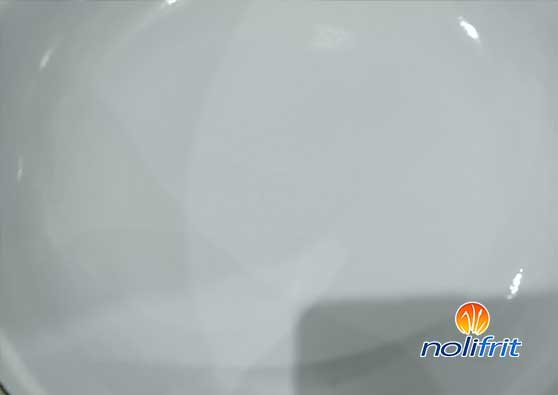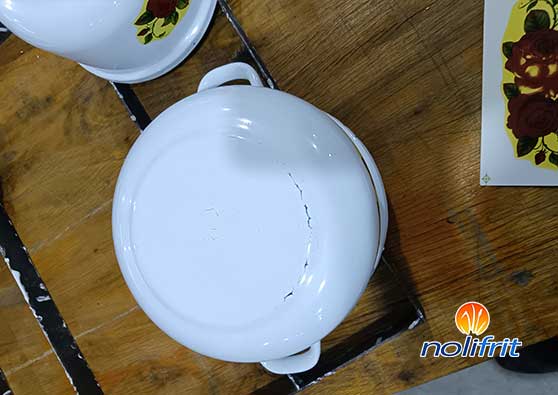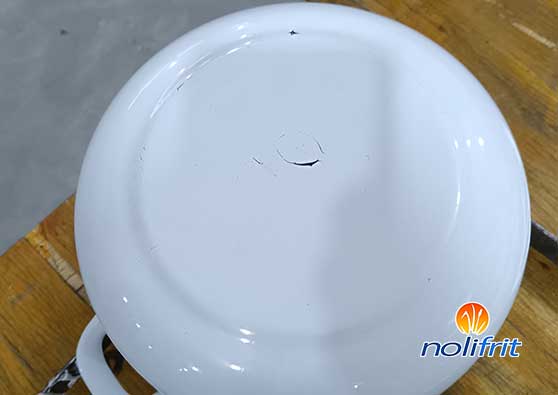What to do if silk screen bubbles appear after enamel firing?
Nolifrit, as a manufacturer of enamel frit, can provide professional solutions for enamel manufactures. Since its establishment, it has successfully helped numerous partners overcome hundreds of enamel defect challenges. Recently, Nolifrit once again successfully resolved the silk screen bubble issue that occurred after firing for an overseas enamel manufacturer. We will summarize and share the experience of solving this issue in hopes of providing reference and assistance to other manufacturers in the industry.

Silk screen bubbles refer to the clusters of bubbles that form in the enamel layer after cracking, where the layers have not fully fused. The root cause of their formation lies in the generation of gases, which may originate from two sources: first, the ground coat being applied too thickly and insufficiently fired, leading to gas accumulation within the enamel layer; second, poor quality steel plates with high carbon content can release gases such as carbon monoxide and carbon dioxide during the firing process. If these gases do not effectively escape from the cover coat enamel frit during the firing stage, silk screen bubbles will form.

To address this issue, Nolifrit's technical team conducted in-depth analysis and investigation on-site. Initially, the team speculated that the formation of silk screen bubbles was related to the softness and poor firing resistance of the ground coat enamel frit. They attempted to resolve the issue by increasing the quartz content, adjusting the enamel formula, and raising the firing temperature of the ground coat enamel frit to enhance adhesion. However, none of these methods completely resolved the problem while maintaining a stable firing temperature (set on-site at 760-780°C).

After repeated experiments and verification, the technical team ultimately identified the crux of the problem and successfully proposed a solution: raising the firing temperature to 800-820°C. Analysis revealed that the fundamental cause of silk screen bubbles was the gases released from the ground coat enamel frit or steel plates. During the firing stage, due to a temperature deviation between the furnace's set temperature and the actual temperature (which may be 20-30°C lower than the true temperature), the cover coat enamel frit remained in a semi-molten state with excessive viscosity, obstructing the escape of gases from the bottom and leading to the formation of silk screen bubbles.